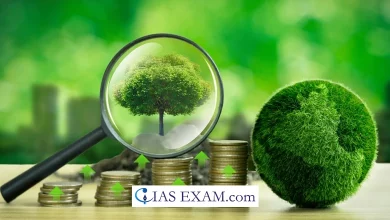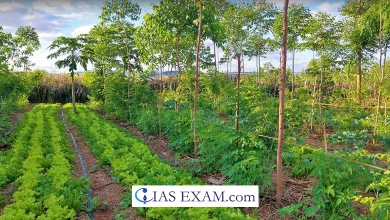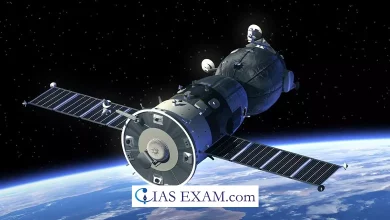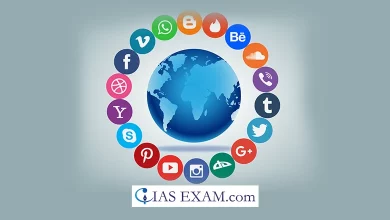Daily Current Affairs for UPSC
Women of India in the Field of Science
Syllabus- Science and Technology [GS Paper-3]

Context- Recent information from the Division of Science and Innovation (DST) showed ladies made up 28% of members in 2018-19 in extramural Innovative work (Research and development) projects, up from 13% in 2000-01.
Key Highlights
- From 232 in 2000-2001 to 941 in 2016-2017, the proportion of female primary investigators in research and development increased more than four times. In 2018, 18.7% of researchers were women, up from 13.9% in 2015.
- The Indian Academy of Sciences released the book Lilavati’s Daughters in 2008: The Women Scientists of India, a book that tells the stories of nearly a hundred Indian women who have worked in science.
- The website thelifeofscience.com was launched in 2016 by Aashima Dogra and Nandita Jayaraj to highlight the experiences of Indian women and non-binary scientists. It would also shed light on the constraints that hinder diversity at India’s most prestigious universities and labs, providing young people with role models.
Women researchers of India
- Anandibai Joshi (India’s most memorable lady doctor), Janaki Ammal (first Indian researcher to have gotten the Padma Shri Grant in 1977), Iravati Karve (India’s most memorable lady anthropologist), Kamala Sohonie (first Indian lady to have sacked a PhD degree in the logical discipline), Rajeshwari Chatterjee (First lady engineer from the territory of Karnataka), Kalpana Chawla (first space traveler of Indian beginning to have forayed into the space), and V R Lalithambika (driving the Gaganyaan mission).
What obstacles hinder women’s progress?
- Familial issues:
-
-
- Inadequate representation and deeply ingrained patriarchy
- When women get married or have children, they frequently drop out of school.
- These factors include dropping out of higher education, taking a career break, overage for scientific jobs, and prolonged absences from work or even resignation.
-
- Issues with Institutions:
-
-
- Unfortunate working circumstances and inappropriate behavior at working environments.
-
- Drop at the post-doctoral level:
-
-
- Women’s participation has been found to be healthy up until the postgraduate level, as we have seen. In any case, there is a drop at the post-doctoral level, where the vast majority of the exploration happens.
-
- Involvement in IITs:
-
- The five IITs—Delhi, Mumbai, Kanpur, Chennai, and Roorkee—have participation rates for women that range from 9% to 14%.
Measures Taken by the Government
- Gender Advancement for Transforming Institutions (GATI):
-
-
- Gender equality in science and technology is the goal of this pilot project run by the Department of Science and Technology.
- In the primary period of GATI, 30 instructive and explore organizations have been chosen by DST, with an emphasis on ladies’ support in positions of authority, staff, and the quantity of ladies understudies and specialists.
-
- Knowledge Involvement in Research Advancement through Nurturing (KIRAN):
-
-
- The Department of Science and Technology has developed a plan to encourage women scientists and prevent them from giving up research for family reasons.
-
- SERB-POWER (Promoting Opportunities for Women in Exploratory Research):
-
-
- SERB – POWER offers organized help in examinations to guarantee equivalent access and weighted open doors for Indian ladies researchers participating in Research and development exercises.
- The Research and development backing to women researchers is given through two parts, in particular: Fellowships and Research Grants from SERB POWER.
-
- Consolidation of University Research through Innovation and Excellence in Women Universities (CURIE) Programme:
-
-
- To increase women’s participation in science and technology, only female universities are receiving funding for the construction of cutting-edge research laboratories and research infrastructure.
- Women in STEM (Science, Technology, Engineering, Mathematics, and Medicine) are eligible for the Indo-US Fellowship.
- It encourages Indian women technologists to conduct international collaborative research for three to six months at prestigious American institutions.
-
- Vigyan Jyoti Scheme:
-
-
- It empowers young girl students of Class 9 to 12 to seek after schooling and vocation in S&T, especially in the areas where ladies are underrepresented.
-
- Award given to a woman scientist:
-
-
- The Ministry of Earth Sciences has established a special award known as the “National Award for woman scientist” to honor one female scientist each year on Foundation Day for her contributions to the field of Earth System Sciences.
-
- Setting up of creches:
-
- A few foundations are setting up creches so the researcher moms can continue with their exploration work continuously.
Conclusion
- For a superior tomorrow, we want to engage ladies in STEM, as it assists ladies with chasing after their fantasies, and science, organizations, society and in this way, countries would acquire massively from their equivalent portrayal.





.png)



